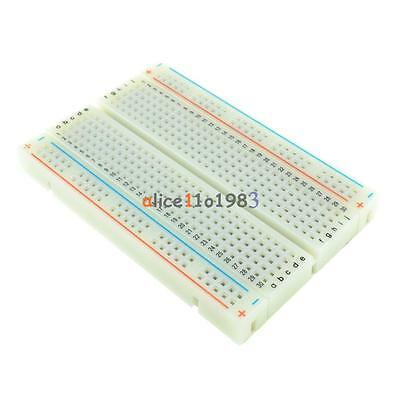-40%
ESP8266 WiFi Evaluation Board, Relay, Button, UEXT, GPIO
$ 7.39
- Description
- Size Guide
Description
The ESP8266 is a small development board that includes aMOD-WIFI-ESP8266-DEV
board in a socket, a
250V AC / 10A
relay (RAS-0515), a button, a UEXT connector, and a 0.1″-pitch header connector with all ESP8266 signals.
The board must be powered by a
regulated
5V supply via its 2.5mm barrel jack. Please see the
Powering the Board
notes below.
A strip of pin headers is included loose for you to solder to the GPIO header pads if desired.
The button has two uses. It's usually a general-purpose button, but if it's pressed during power up the ESP8266 will go into bootloader mode so you can upload new firmware to the chip. To upload code you will need any USB-to-serial 3.3V converter like the USB-SERIAL-CABLE-F (which you can add using the option checkbox at the bottom of this page). You can plug the leads of that cable into the appropriate UEXT pins of this board.
If you use the new Arduino IDE for ESP8266 released recently, with this board you can have an Arduino-driven WiFi device that is faster and cheaper than an official Arduino board by itself — which doesn't even have WiFi built in!
Espressif ESP8266 Features
The ESP8266 is very highly integrated SoC that includes an Xtensa LX106 core processor, RAM, and RF front-end allowing a WiFi TCP/IP stack to be implemented on board with just a few components. Since it found its way to the English-speaking world in the fall of 2014 it has attracted a lot of attention — there's even an Arduino IDE for it now. Its features include:
802.11 b/g/n
Wi-Fi Direct (P2P), soft-AP
Integrated TCP/IP protocol stack
Integrated RF switch, balun, LNA, 24dBm power amplifier and matching network
Integrated PLLs, regulators, DCXO and power management units
+19.5dBm output power in 802.11b mode
Power down leakage current of less than 10µA
Integrated low-power 32-bit CPU could be used as application processor
SDIO 1.1/2.0, SPI, UART
STBC, 1×1 MIMO, 2×1 MIMO
A-MPDU & A-MSDU aggregation & 0.4ms guard interval
Wake up and transmit packets in less than 2ms
Standby power consumption of less than 1.0mW (DTIM3)
Integrated RISC processor, on-chip memory and external memory interfaces
Integrated MAC/baseband processors
Quality of Service management
I2S interface for high-fidelity audio applications
On-chip low-dropout linear regulators for all internal supplies
Proprietary spurious-free clock generation architecture
Integrated WEP, TKIP, AES, and WAPI engines
Add-on UEXT Modules Available
This board has a universal extension connector, UEXT, which allows you to add a peripheral module easily. The UEXT can provide I2C, RS232, SPI and power to the external device. Please see the for a full list of modules that can plug into the UEXT port.
Powering the Board
This board does not have voltage regulation, so you must provide a
regulated
5V DC supply. Our universal power supplies, available in the options below, do not have a 5V setting, so you also must use the voltage regulator board and the adapter cable listed beneath them, or provide your own means of supplying the board with exactly 5V.
ESP8266 Development Board Resources
ESP8266-EVB Schematic
ESP8266-EVB Design Files
for Eagle
How to set Flash/UART/SDIO mode
on MOD-WIFI-ESP8266-DEV module
ESP8266 Documentation
(refers specifically to a reference design)
Espressif Systems ESP8266 Datasheet
ESP8266 Community Forum
— includes section about Arduino IDE for ESP8266
ESP8266 Community Wiki
Espressif Forum
with software and SDK downloads, AT command set, etc.
Espressif GitHub Page
(may not be as up to date as the forum)
Olimex ESP8266 GitHub Page
has more tools and examples; the
IoT Firmware
implements a JSON-based web server client and includes support for the following UEXT modules:
MOD-RGB
,
MOD-TC-MK2-31855
,
MOD-IO2
,
MOD-IRDA+
,
MOD-LED8x8RGB
, and
MOD-RFID125-BOX
, as well as
SNS-FINGERPRINT
UEXT Boards Category









